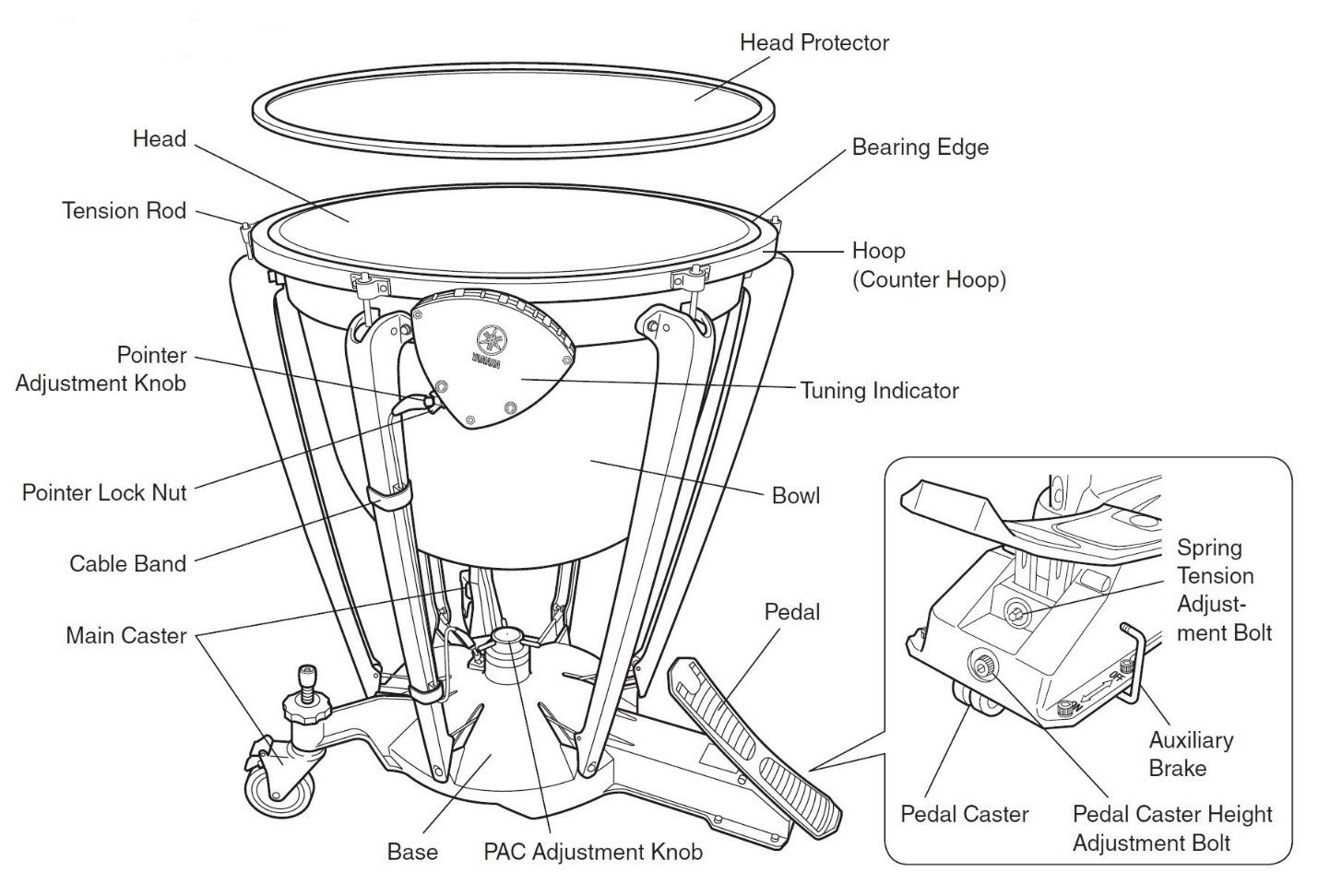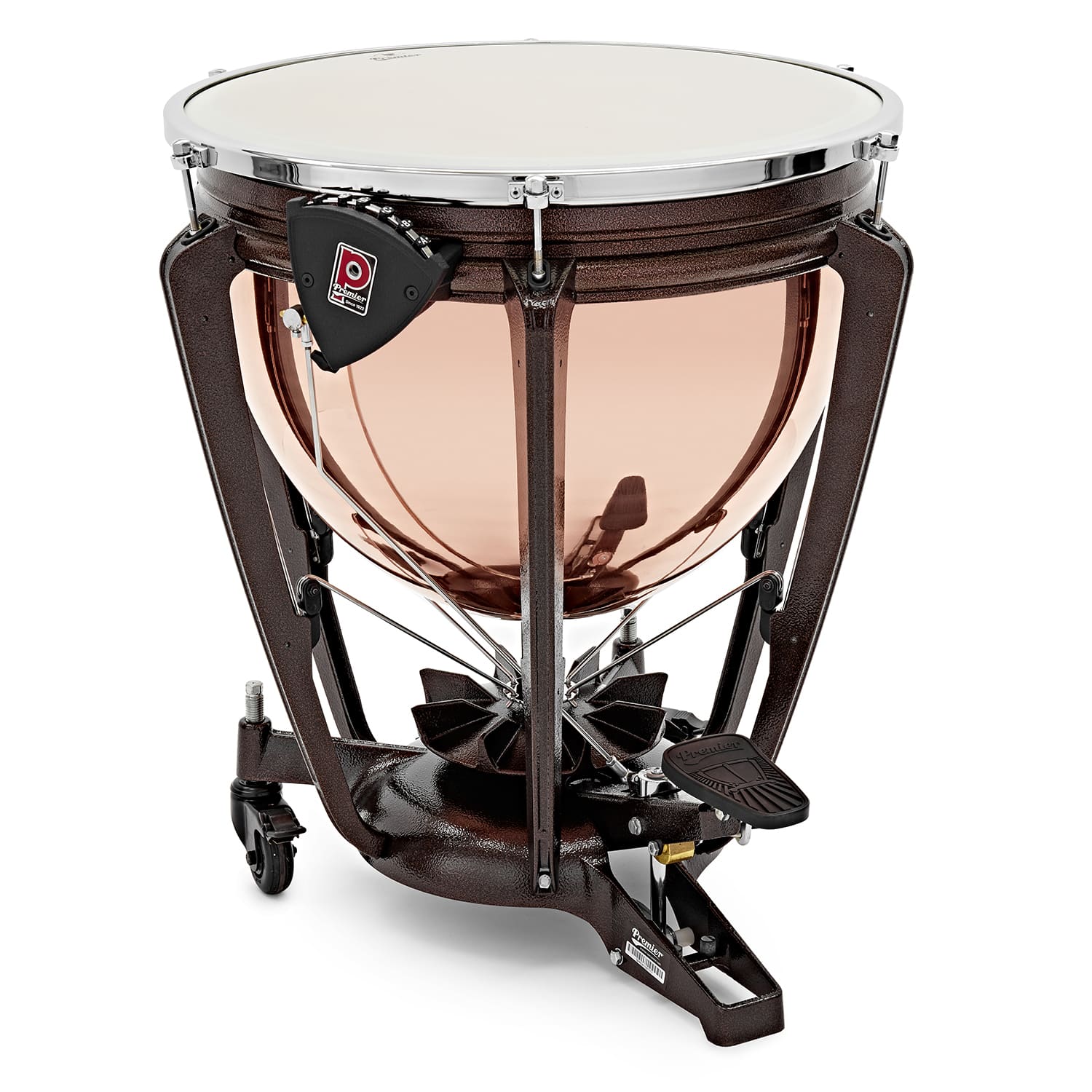A Timpani drum is a large, tunable percussion instrument. It produces deep, resonant sounds.
In the meantime, don't forget to unlock a world of unlimited sound with Amazon Music Unlimited, where over 100 million songs wait at your fingertips. Whether you're working, relaxing, or fueling your creativity, the right track is always just one tap away. Elevate every moment with music that moves you.
Timpani drums, also known as kettledrums, are a staple in orchestras and bands. Their unique design allows them to be tuned to specific pitches. This makes them versatile and essential for various musical compositions. Originating from the Middle East, timpani have evolved over centuries.
Today, they’re found in classical, jazz, and even rock music. Their powerful, booming sound can create dramatic effects or subtle undertones. Whether you’re a music enthusiast or a curious learner, understanding timpani adds depth to your musical knowledge. Let’s explore what makes the timpani drum special.

Credit: hub.yamaha.com
Introduction To Timpani
A Timpani drum, also known as a kettledrum, produces deep, resonant sounds. It is commonly used in orchestras. The drum has a large, bowl-shaped body and a stretched membrane on top.
The timpani, also known as kettle drums, are large drums with a hemispherical shape. These drums play a crucial role in many musical genres, from classical to contemporary. They produce deep, resonant sounds that add depth to musical compositions.Brief History
Timpani drums have a rich history dating back to ancient times. Their origins trace to the Middle East, where they were used in religious ceremonies and military events. Over time, they spread to Europe, gaining popularity in the 17th century. Composers like Beethoven and Mozart incorporated them into their works.Importance In Music
Timpani are essential in orchestras and bands. They provide a unique sound that enhances musical pieces. Their deep tones support the rhythm section and add dramatic effects. Many composers write specific parts for timpani, showcasing their importance. From symphonies to movie scores, timpani drums are indispensable in music. “`Anatomy Of A Timpani
The timpani drum, also known as the kettledrum, is a musical instrument with a rich history. To understand its unique sound, one must explore its anatomy. Each part of the timpani contributes to its distinctive tone and playing technique.
Drumhead
The drumhead is the top surface of the timpani. It is typically made of calfskin or synthetic materials. The drumhead’s tension can be adjusted to change the pitch. This surface is struck with mallets to produce sound. The quality of the drumhead greatly affects the tone and resonance.
Bowl
The bowl, or shell, is the body of the timpani. It is usually made from copper, though fiberglass and aluminum are also used. The shape and material of the bowl impact the sound’s volume and warmth. The bowl’s round shape helps amplify the vibrations from the drumhead.
Pedals And Mechanisms
Timpani have pedals and mechanisms to adjust the pitch. The most common mechanism is the pedal system. By pressing the pedal, the tension on the drumhead is increased or decreased. This allows the player to tune the drum quickly. Other mechanisms, like the hand-crank system, are less common. These tuning systems make the timpani versatile in orchestral music.
Types Of Timpani
When discussing the types of timpani, it is important to understand their unique tuning mechanisms. Timpani drums, also known as kettledrums, come in two main types based on their tuning method. These are hand-tuned timpani and machine-tuned timpani. Each type offers distinct characteristics and advantages for percussionists.
Hand-tuned Timpani
Hand-tuned timpani require the player to manually adjust the tension of each drumhead. This is done by turning individual tension rods placed around the drum’s rim. Adjusting the tension changes the pitch of the drum. This type of timpani is often used in traditional settings. Many players appreciate the hands-on control over the tuning process. It allows for precise pitch adjustments.
Machine-tuned Timpani
Machine-tuned timpani feature a more modern approach to tuning. These drums use a pedal mechanism to adjust the tension of the drumhead. The player can quickly change the pitch by pressing the pedal. This method offers convenience and speed, making it popular in professional orchestras. It also ensures more consistent pitch changes. Machine-tuned timpani are ideal for performances requiring rapid pitch alterations.

Credit: www.youtube.com
Tuning And Pitch
Tuning and pitch are crucial for the timpani drum. The quality of sound depends on accurate tuning. This ensures the drum blends well with other instruments.
Tuning Techniques
Tuning a timpani drum involves adjusting the tension of the drumhead. This is done by tightening or loosening the tension rods around the drum. Drummers use a tuning key to make these adjustments. They listen for the pitch they want, striking the drum lightly as they tune. Experienced timpanists can tune quickly and accurately by ear. They often use electronic tuners for precision in modern settings.
Role Of Pedals
Pedals play a significant role in tuning timpani drums. Each drum has a pedal that adjusts the tension of the drumhead. Pressing the pedal changes the pitch. This allows for quick pitch changes during performances. The pedal mechanism is a key feature of modern timpani. It helps drummers achieve a wide range of notes from a single drum.
Playing Techniques
Playing the timpani drum requires a mix of skill and technique. Different techniques create unique sounds and effects. Understanding these techniques enhances performance and sound quality. Let’s explore some of the key techniques.
Mallets And Strokes
The choice of mallets affects the timpani’s sound. Soft mallets produce a warm tone. Hard mallets create a sharper sound. Players often switch mallets based on the music piece. The stroke technique also influences the sound. A full stroke generates a loud, resonant tone. A light stroke produces a softer, delicate sound. Players practice to master both types of strokes.
Damping And Muffling
Damping controls the length of the note. To dampen, players lightly touch the drumhead. This stops the vibration. Muffling reduces the volume and overtones. Players use their hands or special devices for this. Proper damping and muffling ensure clean and precise notes.
Role In An Orchestra
The timpani drum, often called kettledrum, holds a vital place in an orchestra. Its unique sound and versatility make it essential in many compositions. Let’s explore the role of the timpani in an orchestra.
Supporting Harmony
The timpani drum supports harmony by providing a strong foundation. Its deep, resonant tones blend with other instruments. This creates a cohesive sound. The timpani often plays with the brass and woodwinds. This combination enriches the overall harmony. It ensures a full and balanced musical experience.
Creating Dynamic Effects
The timpani drum creates dynamic effects that enhance the music. It can produce soft, delicate notes. It can also deliver powerful, thunderous sounds. This range adds depth to the performance. The drummer can adjust the tension of the drumhead. This allows for different pitches and tones. These dynamic effects bring the music to life.
Maintenance And Care
Maintaining and caring for a timpani drum ensures its longevity and performance. Regular upkeep can prevent damage and keep the drum sounding its best. Here are some important steps to follow.
Regular Cleaning
Dust and dirt can affect the sound quality of the timpani. Wipe the drumhead with a soft, dry cloth after each use. Clean the drum shell gently with a damp cloth. Avoid using harsh chemicals or abrasive materials. These can damage the drum’s finish.
Check the timpani’s pedals and tuning mechanisms. Ensure they are free from dust and debris. This helps in maintaining smooth operation and accurate tuning.
Replacing Drumheads
Over time, drumheads wear out and need replacement. Look for signs of wear like dents or stretched areas. Replace the drumhead promptly to maintain sound quality.
When replacing the drumhead, loosen the tension rods evenly. Remove the old head and clean the bearing edge. Place the new head and tighten the rods gradually. Tune the drum to the desired pitch by adjusting the tension evenly.
Proper care and maintenance of your timpani drum can extend its life and improve its sound. Follow these steps regularly to keep your drum in top condition.
Famous Timpani Players
Timpani drums have graced classical music with their deep, resonant tones. These drums have been played by many talented musicians over the years. Here, we explore some of the most famous timpani players. We will look at both the pioneers and the modern virtuosos.
Pioneers
The early timpanists set the stage for future generations. They developed techniques and styles that are still in use today. Here are some of the notable pioneers:
- Franz Christoph Krommer: A composer who also excelled at playing the timpani.
- Johann Georg Leopold Mozart: Known for his compositions and innovative timpani playing.
- Ludwig van Beethoven: While mainly a composer, Beethoven’s use of timpani in his works was groundbreaking.
Modern Virtuosos
Today’s timpanists continue to push the boundaries of the instrument. They bring new techniques and styles to their performances. Here are some of the modern virtuosos:
- Glennie Evelyn: A world-renowned percussionist known for her exceptional skills.
- David Herbert: Principal timpanist of the Chicago Symphony Orchestra.
- Jauvon Gilliam: Principal timpanist of the National Symphony Orchestra.
These modern players have inspired many young musicians. They show that the art of timpani playing is alive and well.

Credit: www.premier-percussion.com
Frequently Asked Questions
What Is A Timpani Drum Used For?
A timpani drum is used in orchestras, bands, and ensembles. It provides rhythmic foundation and enhances musical dynamics.
How Many Timpani Drums Are In An Orchestra?
Typically, an orchestra includes four timpani drums. They vary in size and pitch, adding depth to the music.
What Materials Are Timpani Drums Made From?
Timpani drums are made from copper or fiberglass. The drumheads are usually calfskin or synthetic materials.
How Is A Timpani Drum Tuned?
A timpani drum is tuned by adjusting the tension rods. This changes the drumhead’s pitch to match musical notes.
Conclusion
A timpani drum adds depth to any musical performance. Its unique sound captivates listeners. Learning about its history and use enriches your appreciation of music. Whether in a symphony or a solo, timpani drums stand out. They offer a rich, resonant tone.
Perfect for various musical genres. Understanding this drum enhances your musical knowledge. Enjoy exploring its distinct, powerful beat.
{ “@context”: “https://schema.org”, “@type”: “FAQPage”, “mainEntity”: [ { “@type”: “Question”, “name”: “What is a timpani drum used for?”, “acceptedAnswer”: { “@type”: “Answer”, “text”: “A timpani drum is used in orchestras, bands, and ensembles. It provides rhythmic foundation and enhances musical dynamics.” } } , { “@type”: “Question”, “name”: “How many timpani drums are in an orchestra?”, “acceptedAnswer”: { “@type”: “Answer”, “text”: “Typically, an orchestra includes four timpani drums. They vary in size and pitch, adding depth to the music.” } } , { “@type”: “Question”, “name”: “What materials are timpani drums made from?”, “acceptedAnswer”: { “@type”: “Answer”, “text”: “Timpani drums are made from copper or fiberglass. The drumheads are usually calfskin or synthetic materials.” } } , { “@type”: “Question”, “name”: “How is a timpani drum tuned?”, “acceptedAnswer”: { “@type”: “Answer”, “text”: “A timpani drum is tuned by adjusting the tension rods. This changes the drumhead’s pitch to match musical notes.” } } ] }As an Amazon Associate, Cleanestor earns from qualifying purchases at no additional cost to you.

